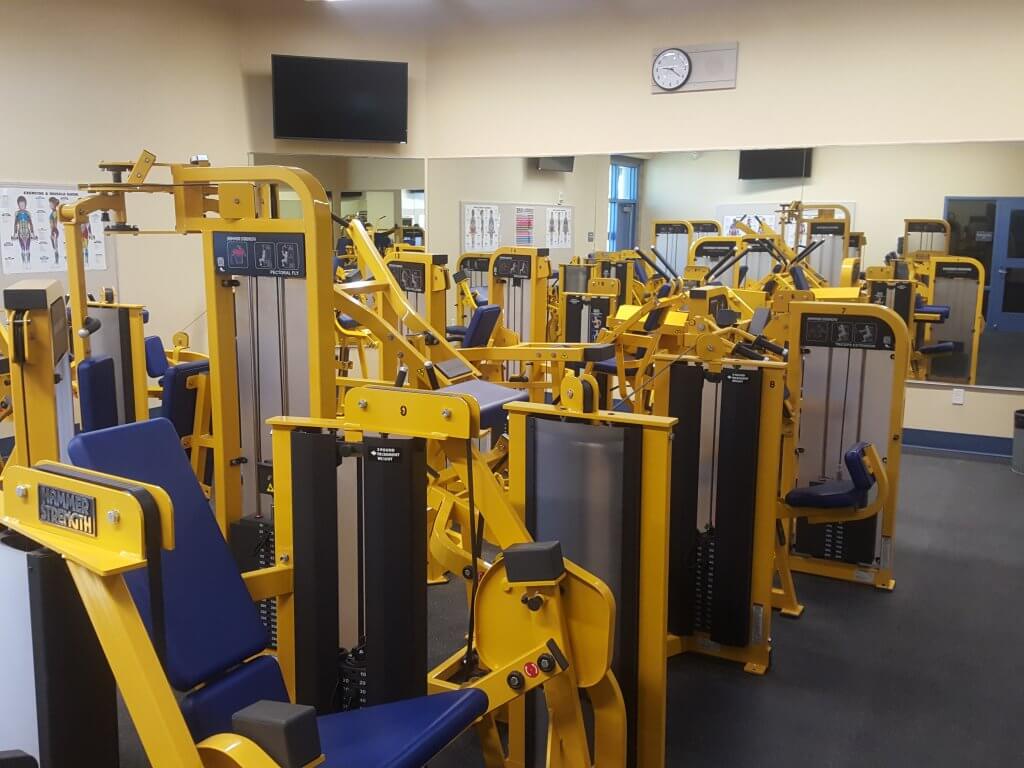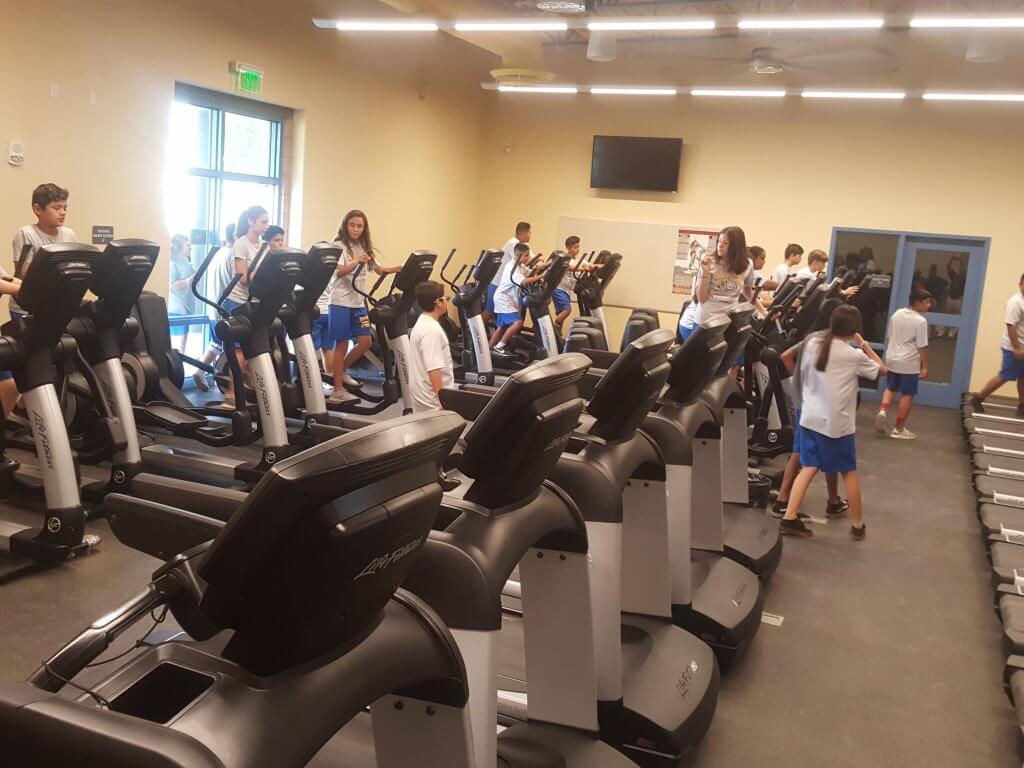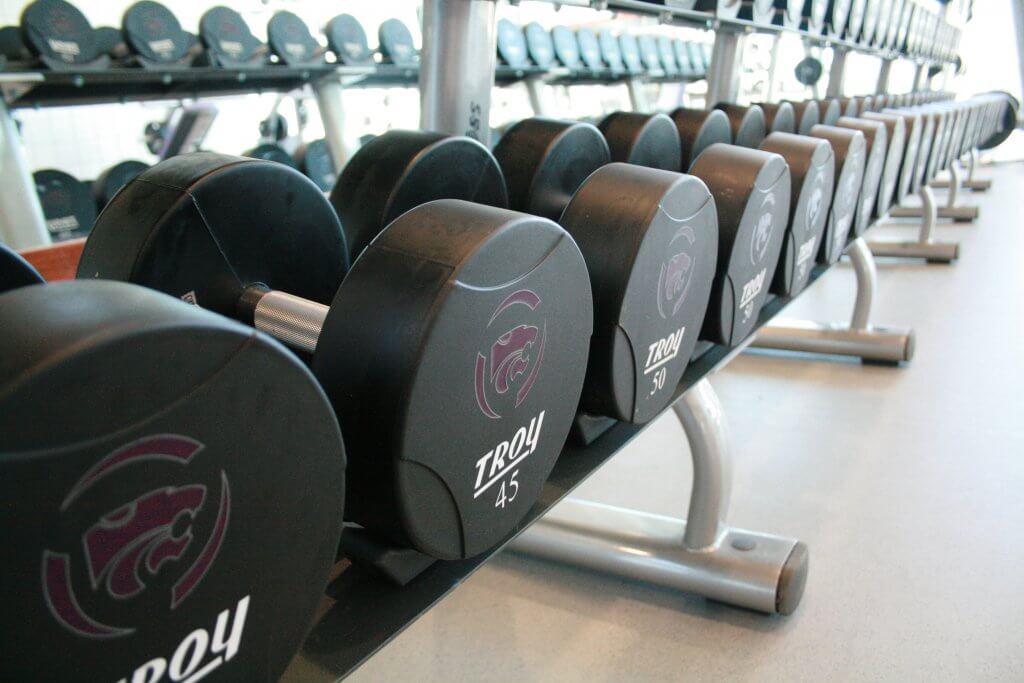Four Back-To-School Must-Haves for Your School’s Fitness Facilities
It’s back to school time and as students flood the hallways and navigate new class schedules, teachers and coaches are gearing up for the busy year ahead. Classrooms, weight rooms and gymnasiums alike need to be looking at four key things to be prepared for the 2018-2019 school year and the fitness and training demands that come with it. Here are a few ways to improve weight rooms and gymnasiums in schools.
1. Safety Check
Every school should be particularly vigilant around the safety of all of its exercise/weight room equipment. “Making sure that all of the equipment is in good working order is at the top of many coaches’ back-to-school lists of things to do,” commented Mike Keller, an Advanced Exercise design consultant specializing in high school and college fitness communities. “Due to the frequent usage and durability needs for every piece of equipment, the safety standards need to be checked and double checked so that cables are not frayed and pulleys are in good shape.”

Safety isn’t just for the heavy weight machines either. Floor to ceiling, hazards need to be spotted and dealt with, as loose carpeting and dirty or ripped upholstery pads can be just as problematic for causing harm. Sometimes broken, sharp or rusted items can go unaddressed in the year-end rush in the spring, so a fall safety check becomes critical. Do a simple and detailed walk through and remove or replace any unsafe equipment.
2. Legal Compliance
In any school, there are federal and often local legal requirements for physical activity and fitness-related goals that the school must comply with. These requirements can include:
- Accessibility of equipment for all student populations (including adaptive students)
- Number, type and size of physical education classes
- Physical education teaching stations and the program content available through those
- and potentially many more depending on your local laws
In California, for example, there are numerous facility and program requirements that can change between school years and any local regulatory or title requirements should be reviewed at the start of every school year.
Schools can often easily comply with requirements that specify multiple pieces of exercise equipment to help ALL students and be in compliance with equal access provisions. Generally this can be accomplished with a single piece of equipment (like a CMDAP functional trainer) which works with all student types and abilities, including adaptive students.
3. Update Technology
In weight rooms, there’s not necessarily much “technology” to update, though screens of all sizes and shapes are routinely driving today’s fitness and training needs. If you have cardio equipment or other options that integrate with technology platforms, make sure that the software is up to date. Download the latest versions of the fitness platforms and make sure that any and all technology pieces are current.
“Technology is a requirement in nearly every school environment, and that holds true for the fitness facilities as well,” said Tim McCarthy, senior vice president of sales and marketing for Advanced Exercise. “Screens in hand or on the wall can and should carry the latest fitness programming, including critical training tips and health guidance to prevent injuries on the sports field, or even just instructions on how to properly use the fitness equipment. Fitness video programming is helping coaches, teachers and fitness facility managers engage and educate end-users about the equipment available, how to use it, and how to improve fitness and training techniques in compelling ways.”

As the positive ties between physical activity and academic performance have been well documented, schools are implementing a number of technology options including gaming systems, fitness and training apps, virtual content and fitness class options and monitoring and tracking. Schools recognize and can easily justify the reasoning behind technology investments: “When it comes to introducing technology into physical education, the benefits extend beyond education. There’s a positive impact on students’ health as well.”
4. (Re)stock Equipment
As school gets back in session, PE teachers and coaches are taking inventories of the weight room and fitness center needs with the interest in and momentum behind starting the school year off as strongly as possible. “Bumpers and bars don’t last forever, especially when they have to endure months of team training and thousands of hours of lifting, dropping and shifting,” continued Keller. “Most of our schools have their best opportunity at the beginning of the year to re-equip and restore their training rooms, and this is that time.”
In addition, school budgets are always tight and with increasing student populations every dollar needs to be smartly spent. Key fitness brands like Troy Barbell & Fitness offer both premium and economy versions of its five most popular student fitness and training products – kettlebells, bumpers, plates, bars, and dumbbells – to meet needs at every level.

Working with a fitness design and equipment partner like Advanced Exercise can offer significant advantages, as their partnerships with manufacturers can mean promotional pricing on often-restocked equipment like barbells, plates and bumpers. For example, Advanced Exercise’s customers who are updating or adding select Troy Barbell & Fitness popular products are enjoying a 30 percent discount off of MSRP until October 1, a valuable opportunity for many schools who are restocking this time of year.
“A 30 percent incentive can make a big difference in a coach’s budget, expanding their options for what they can add to support their growing athletic programs,” added Schlagel. “We want to help them use their fitness budget dollars as strategically as possible, and thanks to our relationship with Troy and some creative thinking, we have a short window where we can offer some great equipment savings.”
For schools who want to take advantage of the Advanced Exercise promotion to improve their weight rooms and gymnasiums, a quick-reference shopping list shows you just how far the numbers can reach. The 30 percent Advanced Exercise discount is available for either the premium or the economy products when ordered through an Advanced Exercise representative, but only for orders placed between August 22 and October 1. Prices don’t include freight, so clients should be aware that shipping weights can be an expense, but working through that with local sales representatives can help reduce the number of shipments of the product mix to fit most budgets.
To find out more about ordering through the promotion, or to explore additional fitness equipment needs for your program, contact your Advanced Exercise fitness design consultant.
About Advanced Exercise
Founded in 1986, Advanced Exercise is a leading fitness equipment and facility design resource, representing more than 30 equipment brands to bring clients the best new or used equipment solutions to maximize the use of available space and meet the needs of a diverse community of fitness amenity end users. For more information on fitness equipment and facility design services, visit advancedexercise.com or call 800-520-1112 to connect with one of Advanced Exercise’s experts.



